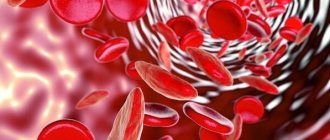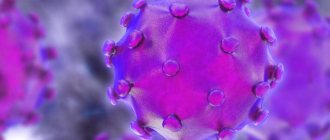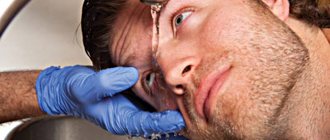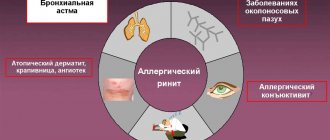Photophobia usually occurs in a complex of other symptoms, which indicates either an eye pathology or a disease affecting the nervous system.
Photophobia (scientific name photophobia ) is a pathological reaction to light. When we come out of the darkness into the light or find ourselves under too much bright light, we usually squint, protecting our eyes until they adapt to the new conditions. This is a normal reaction. If adaptation to the lighting regime does not occur, and not only too bright light is inconvenient, but also normal lighting, then photophobia is evident. The light makes you want to close your eyes and cover yourself with your hand. Exposure to light can cause pain in the eyes and increased lacrimation.
What is photophobia?
Squinting from the bright sun or closing your eyes for a few seconds when leaving a dark room to go outside is a normal reaction of the body. As a rule, a few minutes are enough to adapt to different lighting. But people suffering from photophobia do not get used to bright light even after some time. Discomfort can be caused not only by the sun, but also by light from fluorescent and other lamps, as well as normal lighting, in which the eyes of a healthy person feel comfortable.
Sensitivity to light can be chronic, or it can be temporary, associated with some event, such as injury.
Contrary to the opinion of many patients, photophobia is not an eye disease as such, but a signal that a person has an eye pathology or a disease of the nervous system.
The following symptoms may often occur along with photophobia:
- Cutting, burning, pain or other discomfort in the eyes.
- Tearing.
- Desire to squint even in dim light.
- Increase in pupil diameter.
- Redness of the eyes.
- Decreased visual acuity.
- Dry eye syndrome.
- Tired eyes.
- Flashes, flies, floating dots, blurred vision.
Fear of light can also be accompanied by other symptoms (they depend on the disease that provoked photophobia). Among them:
- headache, migraine, dizziness;
- shortness of breath;
- nausea;
- pressing chest pain;
- sudden changes in mood, irritability, depression, aggressive behavior.
Regardless of the number of symptoms, we recommend consulting a doctor. Only a specialist can make the correct diagnosis, find the cause of photophobia and prescribe the correct treatment for the disease that provoked it.
Pathogenesis
Hypersensitivity to any kind of light rays - natural or artificial - is usually a sign of disorders in the visual analyzer or nervous system - when the eye cannot perform its functions or the scheme of transmitting and processing information in the brain is disrupted. When a large amount of light hits the retina, neuroregulation must “give a command” that helps reduce contact with light so that the retina is not damaged, for example, narrow the pupil, close the eyelid, or an unconditioned reflex - involuntarily squint. If there are diseases or injuries to the organ of vision, the trigeminal nerve, or foreign bodies, then a “specific” negative reaction to light, even of normal intensity, may occur.
Causes of photophobia
Fear of light can be caused either by any pathology or by external conditions. The following reasons are identified:
- Congenital features of the eyes. For example, a lack of coloring pigment in the iris, which occurs in albinism.
- Taking medications, for example, treating eye diseases with drops that dilate the pupils.
- Working long hours at a computer, especially without breaks. Additional symptoms include dry eye syndrome, eye pain, decreased visual acuity, lacrimation, etc.
- Regular and/or prolonged work in areas with insufficient lighting.
- Injuries to the organs of vision. Sensitivity to light after injury develops only in the injured eye. Often the situation is not limited to just this symptom; it all depends on the type of injury.
- Heliophobia. This is a panicky fear of going outside when the sun is shining there. This is a psychological problem in which patients consider the sun to be the cause of skin cancer, fires, burns and various diseases, so they do not go out into the sun without a hat, sunglasses, short sleeves, etc. Heliophobia often turns into social phobia, as patients can go out go outside only in the dark and are forced to be alone for a long time.
- Working indoors with air conditioning or just dry air. As a rule, patients note in these cases not only photophobia, but also symptoms of dry eye syndrome.
- Prolonged eye strain. This usually happens if the work involves reading, design, or the need to examine small details.
- Keratitis (inflammation of the cornea), keratoconjunctivitis, inflammation of the iris and other ophthalmological diseases. Typically, the fear of light in this case is accompanied by lacrimation, redness, pain and pain in the eyes or other symptoms characteristic of each specific diagnosis.
- Infectious diseases: influenza, enterovirus, encephalitis, meningitis, measles, etc. These infectious diseases may be accompanied by symptoms of intoxication of the body: lacrimation, elevated body temperature, nausea, vomiting, etc.
- Damage to the nervous system and various diseases of the central nervous system: depression, chronic fatigue syndrome, psychosis, bipolar disorder, panic attacks, etc.
- Anomalies in the development of the eyeball.
- Other pathologies: cerebral stroke, abscess, etc. With such a pathology, in addition to photophobia, there is increased body temperature, headaches, nausea, etc.
Photophobia can be eliminated by simply removing the cause that caused it, for example, sometimes it is enough to start using computer glasses, remove a piece of dust, a grain of sand or something else that comes into contact with the eye from the eye, regularly humidify the air in the room, etc. If the cause of the pathology is deeper, then Treatment of fear of light is directly related to the treatment of the disease that caused it.
Ophthalmic hydrogel VISMED (VIZMED) 0.3 ml
650R
Buy
Systane Ultra Plus (10 ml) Ophthalmic product
570R
Buy
Avizor Comfort Drops (15 ml)
260R
Buy
How to prevent symptoms of photophobia?
Following some simple preventive measures will prevent the appearance of photophobia (photophobia) in children and adults. Ophthalmologists recommend, whenever possible, reducing the time spent at a computer or tablet, even for educational purposes. It is necessary to follow a daily routine. It is important that sleep is complete and stable: at least 8 hours for children and at least 7 hours for adults. It is imperative to go to bed at the same time. In addition, you should walk in the fresh air, preferably at least 1 hour a day.
One of the preventive measures for the appearance of photophobia is maintaining personal hygiene of the visual organs. This will reduce the risk of penetration of various bacteria and microorganisms that cause eye diseases, which in most cases provoke photophobia. Another important factor is a balanced diet that provides the necessary amount of vitamins and microelements. To avoid the development of photophobia due to visual fatigue, people with high visual stress should regularly perform simple eye exercises. Ophthalmologists advise taking short breaks every half hour when working at a monitor for a long time.
People who are forced to spend long periods of time outdoors due to the nature of their work are recommended to wear sunglasses. As a rule, this applies to builders, drivers and representatives of other professions who often stay outdoors during the daytime.
Do you use contact correction products? We recommend that you familiarize yourself with the wide range of lenses on the Ochkov.Net website. Here you can profitably buy products from world brands at competitive prices. We guarantee you fast delivery of goods and ease of ordering!
Diagnosis and treatment of photophobia
Photophobia of the eyes cannot be treated without identifying and eliminating its cause. Ophthalmological specialists do not recommend self-diagnosis and self-medication, since the source of photophobia may be a serious illness that requires specialist intervention.
Diagnosis of fear of light
- Diagnostic conversation. The doctor determines at what moments photophobia of the eyes manifests itself, whether this damage is associated with exposure to sunlight, and whether the eyes react to artificial lighting. Additionally, the ophthalmologist clarifies the presence of concomitant diseases, finds out whether the patient takes medications, instills drops, etc.
- Ophthalmological examinations. Depending on the symptoms and general health of the patient, the doctor performs biomicroscopy, ophthalmoscopy, tonometry, and gonioscopy. The specialist may prescribe additional studies: ultrasound of the eyes, culture for bacteria, etc. Thanks to a thorough diagnosis, he can detect the source of infection, assess the condition of the anterior segment and fundus of the eye, the patency of the retinal vessels, etc.
- Neurological examinations. If photophobia is not associated with ophthalmological diseases, the patient is recommended to visit a neurologist, who may refer the patient for an MRI, Doppler ultrasound, or other examination.
Additionally, the ophthalmologist may recommend that the patient undergo examination by an endocrinologist, phthisiatrician or other specialist.
Treatment of fear of light
Photophobia can be treated immediately after diagnosis. Therapy usually includes:
- Treatment of the underlying disease. For example, a specialist can select medications to treat migraines, panic attacks, etc., prescribe drops to combat conjunctivitis, scleritis, dry eye syndrome, etc.
- Refusal of medications that provoke a fear of light, if this does not cause harm to health.
- Wearing sunglasses or photochromic lenses. The optometrist may recommend wearing them until the treatment produces results.
Associated symptoms
Depending on what exactly triggered photophobia, it may appear along with various other symptoms, of which there are many. These include:
- redness;
- burning and itching;
- discomfort even from dim light;
- circles, dots and spots before the eyes;
- blurred vision;
- migraine;
- nausea.
Prevention
To prevent photophobia and the diseases that cause it, it is recommended to adhere to the following rules:
- periodic visits to an ophthalmologist with laboratory and instrumental tests to promptly identify and eliminate eye diseases;
- timely treatment of systemic diseases to prevent the formation of complications;
- avoiding visiting crowded places during an epidemic of viruses or infections that often appear in the autumn-winter period;
- removing dangerous objects that could injure a child’s eyes;
- Wearing sunglasses outdoors when exposed to strong winds.
Preventive measures will not eliminate the possibility of all ophthalmic diseases, but will significantly reduce the risk of their development. Parents should remember that photophobia can be a symptom of an ophthalmological or systemic disease, so not all conditions can be treated at home.
Diet for photophobia (photophobia)
Diet for eyes, nutrition to improve vision
- Efficacy: therapeutic effect after 2 months
- Timing: constantly
- Cost of products: 1800-1900 rubles. in Week
Nutrition for vision problems should be balanced and capable of providing the body with proteins, fats, carbohydrates, fluids, vitamins and microelements. Approximately the diet should consist of:
- various vegetables, fruits and dried fruits, berries, juices, compotes and herbal teas;
- meat, eggs, fish and seafood;
- porridge and whole grain baked goods;
- In this case, food is prepared by boiling, baking, using a steam or multicooker, seasoned with high-quality natural oils, sauces, herbs, seeds and nuts.
Photophobia of the eyes in an adult: why it occurs
One of the most common causes of photophobia are various infectious, inflammatory and other diseases of the visual organs. Often people suffering from conjunctivitis (inflammation of the uvea), keratitis (inflammation of the cornea), and iritis (inflammation of the iris) turn to ophthalmologists with this problem.
In some cases, photophobia of the eyes in adults manifests itself due to adverse environmental influences, for example, with prolonged exposure to ultraviolet rays reflected from snow. Also, photophobia can result from damage to the eyes from excessively bright light during welding work without protective glasses. Sometimes the occurrence of this reaction is associated with some common diseases, such as migraine, acute respiratory infections, influenza, and an acute attack of glaucoma may also be the cause.
People on forums often ask what serious disease symptom is photophobia. Experts say that this reaction may indicate problems with the thyroid gland or signal a tumor in the brain. The patient will be prescribed additional examinations, such as ultrasound, MRI or CT. The causes of photophobia are sometimes associated with damage to the visual organs of various types, including wearing incorrectly selected contact lenses or penetration of a foreign body. Sunburn, as well as ulcers, erosion and mechanical damage to the cornea can also cause involuntary squinting of the eyes when in direct contact with a light source.
What diseases does increased light sensitivity of the eyes indicate? The appearance of this reaction is often not associated with pathological processes. Sometimes constant drying of the cornea and increased visual stress also become the causes of photophobia. This is especially true for people who spend a long time in front of a computer monitor.
In rare cases, symptoms of photophobia occur in people due to the complete absence or insufficient amount of a special pigment in the body (melanin). At the same time, the eyes react too actively to any light source. In this case, the pathology is congenital. It should be noted that this form of sphetophobia is quite rare.
Photophobia can be a symptom of what disease?
- Various diseases of the organs of vision (inflammatory, infectious, etc.);
- Malfunctions of the nervous system;
- Pathologies of the functioning of the thyroid gland;
- General diseases (flu, acute respiratory infections, glaucoma);
- Hereditary diseases associated with insufficient melanin in the body.







